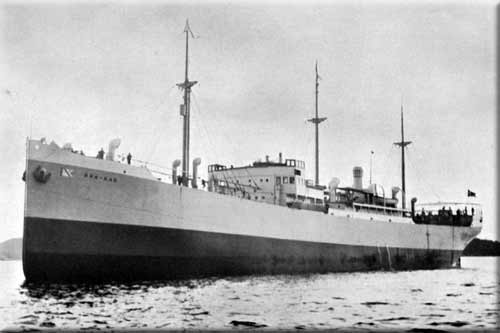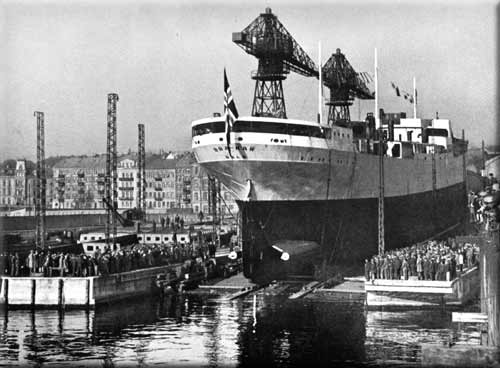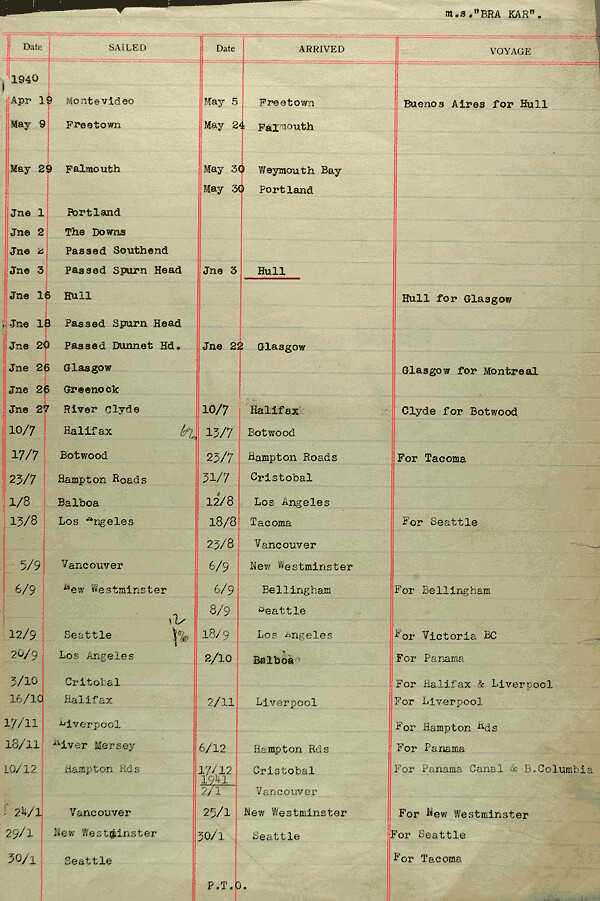In 1939, the advance of the Nazi army in northern Europe was constant and the invasion of Norway imminent. The head of the Norwegian Parliament Carl J. Hambro then devised a plan to rescue the royal family, members of the government and the country's gold reserves. First move made all the gold in the north escaping the Nazi raids by dividing the load over more land convoys, trains and even small vessels. Later when it was clear that there would not remain safe areas, gold was transferred to England where, however, remained for a short time.
In the Spring of 1940 Hambro devises a plan to transport 45 tons of nowegian gold to the United States and Canada as described in his book "I Saw It Happen In Norway". The main problem was the German naval blockade that put in jeopardy every merchant ship transited on traditional routes. This forced them to navigate on routes northernmost to limit the dangers arising from raids Nazi U-boat. These routes, however, had a higher risk due to the numerous icebergs that season.
Carl Hambro commanded that gold was stowed in crates and barrels firmly linked to other empty boxes so that the entire load retained buoyancy so it could stay afloat on its own if the cargo had been sunk. In addition it was planned that on the bridge of these vessels was placed a small boat capable of survive to the sinking of the cargo and tow gold to the nearest safe port. In most cases these were small lifeboats. It was not the case of Gometra.


The Norwegian government in exile in London decided to buy Gometra by James F. Lang at the end of 1939 and commissioned the necessary changes to make it watertight in the event of rollover and self-righting in all conditions. The cargo selected for the mission was the Norwegian ship of 3,800 tons Bra-Kar. Commander, Jacob Kristiansen, discovered the nature of the mission asked unsuccessfully to have on board weapons and ammunition as a defense against U-boats. Instead he found himself on the foredeck Gometra with its cargo of gold and three experienced sailors.
The Bra-Kar departed from Glasgow June 27, 1940 part of the convoy OB 175 to Montreal. Probably because of the secrecy of the mission Bra-Kar broke away from the convoy on June 30 to arrive independently at Halifax on July 10. Carl J. Hambro himself was on board the Bra-Kar for this mission. Captain Kristiansen, as reported in "Blood on the Midnight Sun", says Hambro was particularly concerned about the fate of the precious cargo to spend most of the time with the crew of Gometra, or even onboard her .

Bra-Kar Voyage Record | Courtesy Norwegian National Archives
Fortunately, the cargo was not intercepted and had no incidents along his journey. Come to Halifax gold was stashed in Canadian banks while Gometra was discharged in the port of Halifax where Charles Rawling and William J. Roue found her.
It is said that the Gometra's story linked to the transfer of gold Norwegian inspired the first novel by Desmond Bagley, "The Golden Keel" published by Collins in 1963.

